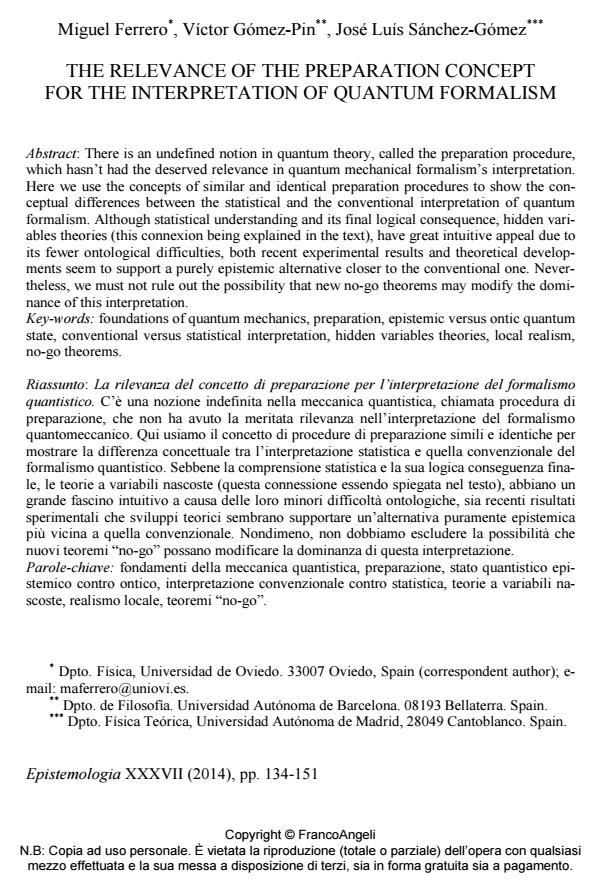The relevance of the preparation concept for the interpretation of quantum formalism
Titolo Rivista EPISTEMOLOGIA
Autori/Curatori Miguel Ferrero, Victor Gómez-Pin, José Luís Sánchez-Gómez
Anno di pubblicazione 2014 Fascicolo 2014/1
Lingua Inglese Numero pagine 18 P. 134-151 Dimensione file 643 KB
DOI 10.3280/EPIS2014-001009
Il DOI è il codice a barre della proprietà intellettuale: per saperne di più
clicca qui
Qui sotto puoi vedere in anteprima la prima pagina di questo articolo.
Se questo articolo ti interessa, lo puoi acquistare (e scaricare in formato pdf) seguendo le facili indicazioni per acquistare il download credit. Acquista Download Credits per scaricare questo Articolo in formato PDF

FrancoAngeli è membro della Publishers International Linking Association, Inc (PILA)associazione indipendente e non profit per facilitare (attraverso i servizi tecnologici implementati da CrossRef.org) l’accesso degli studiosi ai contenuti digitali nelle pubblicazioni professionali e scientifiche
There is an undefined notion in quantum theory, called the preparation procedure, which hasn’t had the deserved relevance in quantum mechanical formalism’s interpretation. Here we use the concepts of similar and identical preparation procedures to show the conceptual differences between the statistical and the conventional interpretation of quantum formalism. Although statistical understanding and its final logical consequence, hidden variables theories (this connexion being explained in the text), have great intuitive appeal due to its fewer ontological difficulties, both recent experimental results and theoretical developments seem to support a purely epistemic alternative closer to the conventional one. Nevertheless, we must not rule out the possibility that new no-go theorems may modify the dominance of this interpretation.
La rilevanza del concetto di preparazione per l’interpretazione del formalismo quantistico. C’e una nozione indefinita nella meccanica quantistica, chiamata procedura di preparazione, che non ha avuto la meritata rilevanza nell’interpretazione del formalismo quantomeccanico. Qui usiamo il concetto di procedure di preparazione simili e identiche per mostrare la differenza concettuale tra l’interpretazione statistica e quella convenzionale del formalismo quantistico. Sebbene la comprensione statistica e la sua logica conseguenza finale, le teorie a variabili nascoste (questa connessione essendo spiegata nel testo), abbiano un grande fascino intuitivo a causa delle loro minori difficolta ontologiche, sia recenti risultati sperimentali che sviluppi teorici sembrano supportare un’alternativa puramente epistemica piu vicina a quella convenzionale. Nondimeno, non dobbiamo escludere la possibilita che nuovi teoremi "no-go" possano modificare la dominanza di questa interpretazione.
Parole chiave:Fondamenti della meccanica quantistica, preparazione, stato quantistico epistemico contro ontico, interpretazione convenzionale contro statistica, teorie a variabili nascoste, realismo locale, teoremi "no-go".
- Coming From Material Reality Miguel Ferrero, J. L. Sánchez-Gómez, in Foundations of Science /2015 pp.199
DOI: 10.1007/s10699-014-9362-2
Miguel Ferrero, Victor Gómez-Pin, José Luís Sánchez-Gómez, The relevance of the preparation concept for the interpretation of quantum formalism in "EPISTEMOLOGIA" 1/2014, pp 134-151, DOI: 10.3280/EPIS2014-001009